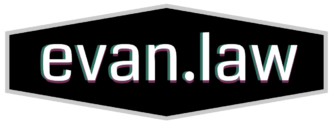In re Anonymous Online Speakers, — F.3d —, 2010 WL 2721490 (9th Cir. July 12, 2010)
Quixtar (which used to be Amway) sued Signature Management TEAM (“TEAM”) for tortious interference and other claims, alleging that TEAM engaged in a smear campaign against Quixtar on the internet. In his deposition, TEAM’s online content manager refused to answer questions concerning the identity of the authors of certain statements made against Quixtar online. On Quixtar’s motion, the court ordered that the online content manager answer some of the questions concerning the anonymous speakers.
The anonymous speakers sought mandamus relief from the Ninth Circuit. On appeal, the court denied the request. It held that the district court’s decision was not “clearly erroneous as a matter of law.”
The district court had applied the stringent test set out in Doe v. Cahill, which requires, among other things, that the party seeking the identity of an anonymous internet speaker present enough facts to support a hypothetical motion for summary judgment.
The Ninth Circuit looked to the nature of the speech at issue — commercial speech — and held that the Cahill standard was too high. But the application of a too-high standard did not mean that the lower court should be reversed. The outcome would have been the same (i.e., the anonymous speakers would have been ordered unmasked) even if the district court had correctly applied a lower standard appropriate for commercial speech.
This is a significant case on the topic of anonymity because it is only the third federal circuit opinion to consider the question as to when unknown online speakers should be identified. The others are NLRB v. Midland Daily News (6th Cir. 1998) and Lefkoe v. Jos. A. Bank Clothiers, (4th Cir. 2009).










![Reblog this post [with Zemanta]](http://img.zemanta.com/reblog_e.png?x-id=c979d9cb-0765-47b2-a007-3e54cc22e6f7)